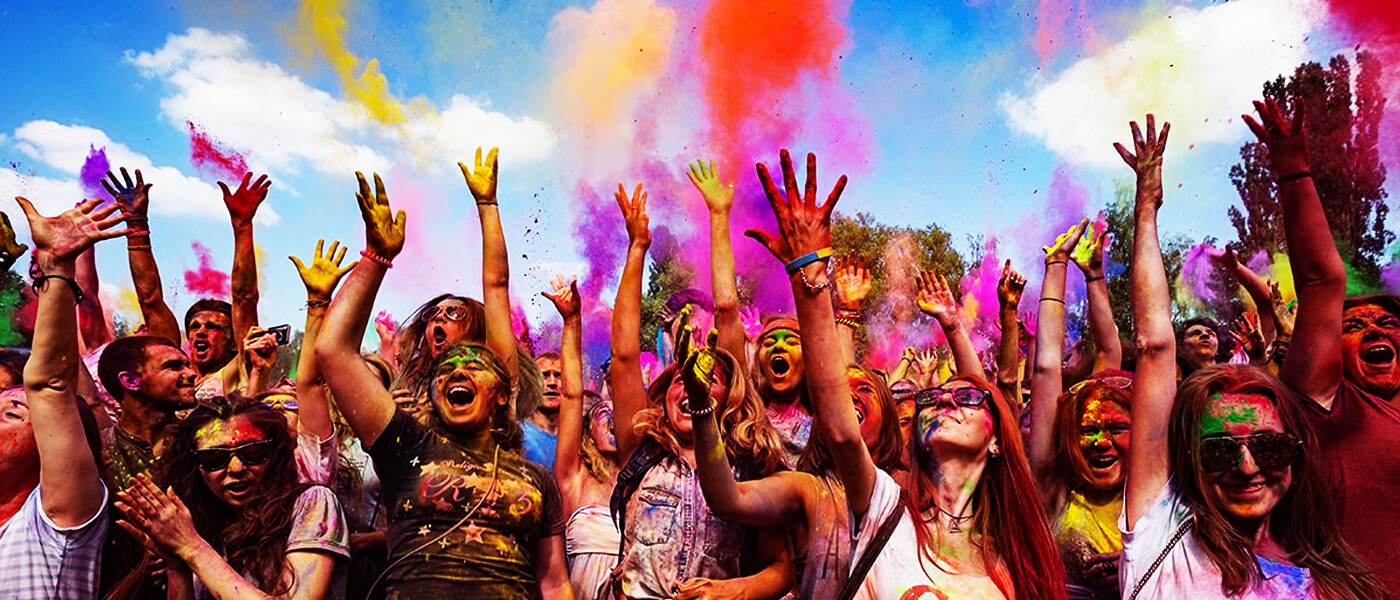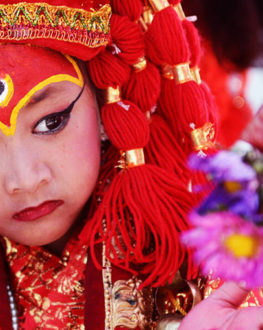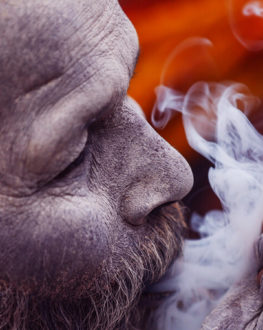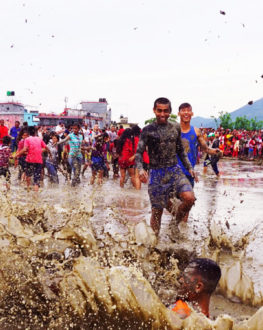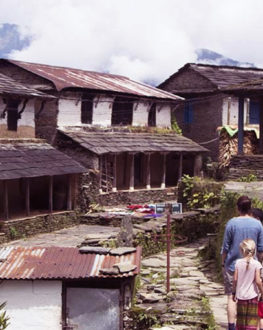It is also known as Phagu Purnima which is a festival of colours and water. This festival is celebrated from Falgun Shukla Ashthami to Purnima (full moon) as a celebration of Basanta (Spring) season. People have gathered with their friends and family since early morning today and commenced the celebration by applying colours on each other and making merry amongst themselves. This is joyful festival for children; they used Pichakari (water Gun of Bamboo or plastic) with colorful water throw each other. Even they filled balloon with water (Lola) and smeared over them. The festival is celebrated on two different days. Hilly region of the nation celebrates the festival on the day of the full moon while the Terai region celebrates it the next day.
According to Hindu Mythology, the demon king Hiranya kashyapu , who was unhappy with his son Prahlad for his wholehearted devotion to the Lord Vishnu, he ordered his sister Holika to kill Prahalad.Holika had the power of emitting fire. She took Pralhad into her lap intending to burn him but with Lord Vishnu’s immortal blessings instead she was burnt to ashes. From then onwards, the Fagu Poornima celebration begins with a Holika dahan or making a bonfire commemorating the death of Holika on the eve of Holi, the symbol of triumph of good over evil.
The Holi start one week before than main celebration. As traditional rituals a long bamboo stick (lingo) decorated with colorful flags/cloths called Chir (Holi pole) which is standing in the three heritage squares of Nepal namely Kathmandu Durbar Square, Bhakatpur Durbar Square and Patan Durbar Square. At the end of the festivities the Chir is taken to a bonfire. It is called Chir Haran or Holika Dahan.
This is great experience for every tourist from different world, who would like to know about unique Nepali culture.

